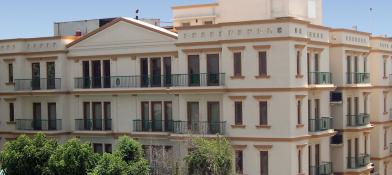Laparoscopic Sleeve Gastrectomy With Proximal Jejunum Bypass
LSG PBJ is a surgical procedure for weight loss or Bariatric surgery. Bariatric surgery is one of the effective treatment procedures for long-term results of weight loss. It is the most done procedure among the different types of Bariatric surgeries.
LSG PBJ is one of the sleeve-plus procedures among various other procedures. It provides good results with excellent weight loss and remission. It is considered the primary procedure or the first part in high-risk obese patients. It is an easily adaptable and versatile procedure.
Procedure:
It involves a few cuts or incisions placed in the stomach to create a sleeve, reducing the size of the stomach. Along with reducing the size of the stomach, it is supplemented with an additional intestinal bypass. The sleeve plus procedure removes a part of the proximal jejunum and rejoins it to the distal jejunum. As the stomach size is reduced, the patient will feel full even after eating minimal food.
Indications:
This procedure is done when an individual has excess weight, is obese, and is unable to lose weight by other means. Body mass index (BMI) is a tool to measure obesity. Any BMI > 40 indicates extreme obesity. Extreme obesity, along with comorbid conditions, is indicative of LSG. Any obese individual with life-threatening comorbid conditions like cardiovascular diseases, hypertension, high lipid levels, Diabetes mellitus, cancers, stroke, a condition called obstructive sleep apnea, and infertility.
Contraindications:
LSG PJB is absolutely contraindicated in individuals with cancers, poor functional status, illicit drug or substance abuse, or an uncontrollable psychiatric disease. Some relative contraindications include individuals who are at the age of extremities, having type 1 diabetes, a liver disease called cirrhosis, and previous abdominal surgery. Individuals with certain gastrointestinal disorders like severe gastroesophageal reflux disease and Barrett's esophagus are also contraindicated for LSG PJB.
Advantages of LSG PJB:
LSG PJB is a recent procedure among sleeve gastrectomies. It is a safer and easier surgical option for individuals with BMI > 45. Any vascular concerns during the surgical procedure are easily manageable in LSG PJB. Among the sleeve plus gastrectomies, LSG PJB requires less operative time than other techniques like LSG duodenojejunal bypass.
LSG PJB induces weight loss by altering the body's energy balance. This reduces hunger, increases the rate of metabolism and energy expenditure, melts fat as the body cannot store large quantities of fat, and fastly moves undigested food to the other parts of the intestine. It also helps to control diabetes by reducing insulin resistance and optimizing insulin production.
Before the procedure:
Before LSG with PJB, complete details of the patient's medical history, medication history, and history of previous surgeries are collected. Few blood tests, urine tests, and imaging studies may be needed to understand the present physical condition of the individual. Evaluation of obesity is done to rule out other causes by endocrinologic evaluation. Psychologic evaluation is also done to assess the patient's condition and the individual's readiness to undergo lifestyle changes.
Diet will be restricted, and a list of medications to be stopped and to be used before the procedure will be given. The surgery will be done on an empty stomach. Hence, it is necessary to refrain from eating anything 8-12 hours before surgery.
During the procedure:
LSG PJB is done under anesthesia using the laparoscopy technique and has several steps. Following the sterilization of the surgical area with an antiseptic solution, small cuts or incisions are created on the left side of the abdominal surface. Additional entry points are also made near the belly button and the right upper part of the abdomen. The abdomen is filled with gas to create space for the surgical site.
After adjusting the vital organs, a narrow stomach sleeve is created vertically. A sleeve gastrectomy is performed where a portion of the stomach is removed, leaving an intact sleeve. This is closed with staplers. Identifying a part of the small intestine called the ligament of Treitz, a part of the jejunum is removed about 20 cm from it, and the lower end of the jejunum is connected to near the biliopancreatic jejunal limb (another part of the small intestine).
After the procedure:
An individual is brought to the recovery room and carefully monitored till the vitals stabilize. Later, the individual may be prescribed certain antibiotics and painkillers to reduce infection. The individual is advised to be on sugar-free, non-carbonated liquids for a week. Pureed foods follow this for the next 3 weeks. One can have normal solids about four weeks after surgery.
Additional medications like multivitamins, calcium supplements, and vitamin B-12 injections are prescribed once a month. Regular blood work and physical consultations may be needed. Exercise programs are advised to keep the weight in check. Maintenance medications like antacids and diabetes medications are adjusted and prescribed. Dietary counseling is done, and regular follow-up visits are scheduled.
The success of LSG:
The success of LSG PJB remains in effective weight loss and reduction of comorbidities. Depending on the previous weight, an individual may lose about 40 to 70 % of their excess weight.
Risks and complications:
The risks and complications of LSG include surgical risks like excessive bleeding, infections, adverse reactions to anesthesia, blood clots, breathing problems, loss of integrity of the staple line, compromised blood supply along the staple line, poor healing of the tissues, and leakages from the cut portions of the stomach.
Other risks include weight gain, diabetes recurrence, internal herniation, intestinal obstruction, and a rare complication of bacterial overgrowth syndrome.
Conclusion:
Laparoscopic Sleeve Gastrectomy with Proximal Jejunum Bypass (LSG PJB) is a promising surgical intervention combining stomach and intestinal modifications. It offers effective and sustainable results for weight loss. LSG PJB provides a safer and more successful option, particularly for those with extreme obesity.




















